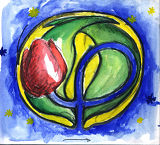23 #include <tulip/Plugin.h>
24 #include <tulip/PluginLister.h>
36 static const std::string INTERACTOR_CATEGORY =
"Interactor";
64 Q_PROPERTY(
unsigned int priority READ priority)
65 Q_PROPERTY(QAction *action READ action)
66 Q_PROPERTY(QCursor cursor READ cursor)
70 return INTERACTOR_CATEGORY;
72 std::string
icon()
const override {
73 return ":/tulip/gui/icons/32/plugin_interactor.png";
188 return QObject::eventFilter(obj, ev);
197 class TLP_QT_SCOPE InteractorLister {
198 static QMap<std::string, std::list<std::string>> _compatibilityMap;
201 static void initInteractorsDependencies();
202 static std::list<std::string> compatibleInteractors(
const std::string &viewName);
Interactor provides a way to handle user inputs over a view. Basically, The interactor class is an ov...
virtual QAction * action() const =0
virtual void install(QObject *target)=0
Install the interactor on the given target A call to this method means that the interactor should sta...
virtual tlp::View * view() const =0
virtual QCursor cursor() const =0
static void setupConfigWidget(QWidget *)
this method should be called before setting up the ui of an interactor config widget
virtual bool showContextMenu(const QPoint &, const QPointF &)
This method is called whenever the context menu is required on the view.
std::string category() const override
A string identifier for a plugin used for categorization purposes.
virtual QWidget * configurationOptionsWidget() const
std::string icon() const override
The icon (preferably a thumbnail) of the plugin.
virtual void undoIsDone()=0
Informs the interactor when the undo command (Ctrl+Z) has been triggered.
virtual QLabel * configurationDocWidget() const
virtual bool isCompatible(const std::string &viewName) const =0
Checks the compatibility between the interactor and the given view (identified by its name)....
bool eventFilter(QObject *obj, QEvent *ev) override
Provides input filtering for the interactor.
virtual void uninstall()=0
Removes the interactor from the previously set target. Interactors can be installed on only one targe...
virtual void construct()=0
Builds up the interactor's internal state. This method should be used instead of the constructor to i...
virtual unsigned int priority() const =0
virtual void setView(tlp::View *)=0
Defines the view object associated to this interactor.
Top-level interface for plug-ins.
View plugins provide a way to dynamically add to a Tulip plateform various ways to visualize a graph.

